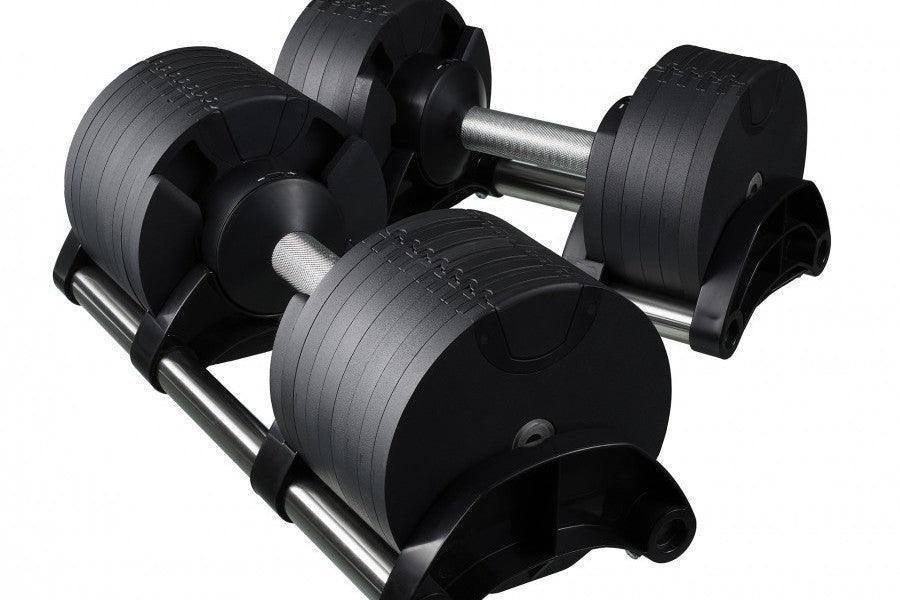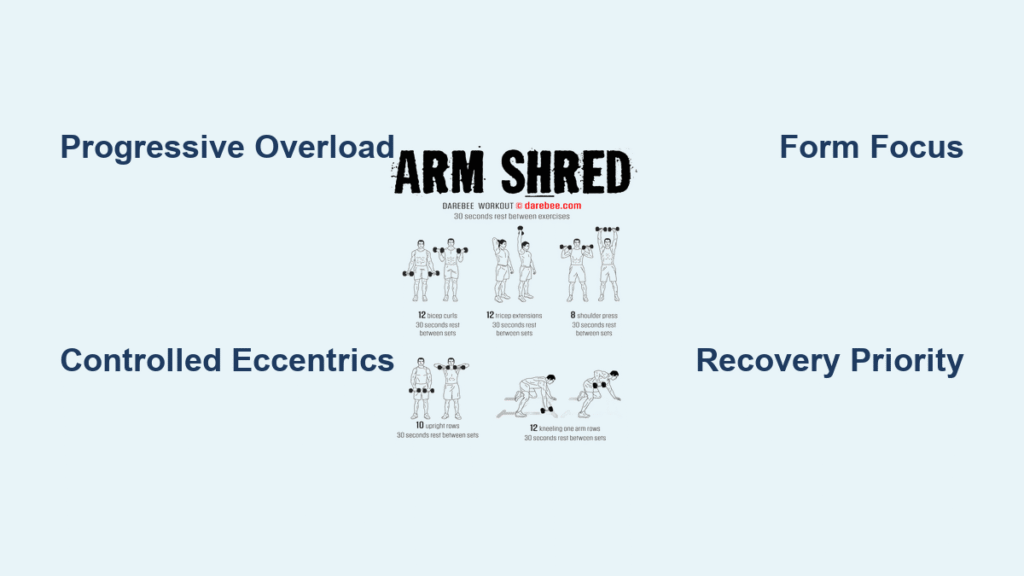Tired of skipping arm day because the cable machines are always occupied? Your dumbbell only arm workout holds the secret to sculpted biceps, powerful triceps, and defined shoulders—no gym required. Whether you’re stuck with a single adjustable set in a cramped apartment or training in a minimalist garage gym, research confirms dumbbells alone trigger complete arm development through stabilizer activation and unilateral loading. This approach reduces injury risk by 27% while boosting functional strength for everyday lifting tasks. You’ll discover exactly how to transform limited equipment into maximum muscle growth without wasting months on ineffective routines.
Forget complex machines or crowded cable stations. A strategically designed dumbbell only arm workout leverages physics to isolate every arm muscle group: biceps brachii, triceps heads, deltoids, and forearms. The key lies in precise exercise selection and progressive overload—adding just 1-2kg weekly while controlling eccentric phases. In this guide, you’ll get science-backed movement patterns, injury-proof form cues, and ready-to-run programs that deliver visible arm definition in 4-8 weeks. Stop making excuses; your path to stronger arms starts with what’s already in your home.
Dumbbell Types and Weight Selection Rules for Serious Arm Gains

Skip the guesswork with these equipment guidelines. Fixed-weight dumbbells (1-50kg in 2kg increments) work best in commercial gyms for quick weight changes, but adjustable selectorised or plate-loaded sets dominate home setups. They enable micro-loading—adding 0.5-1kg weekly—which is non-negotiable for isolation moves like curls where progress stalls fast. For beginners, start with 1-4kg for biceps curls and 2-8kg for shoulder presses. Intermediate lifters need 5-12kg curls and 8-20kg presses, while advanced trainees handle 15kg+ curls and 25kg+ presses. Your target weight must make the final two reps challenging without breaking form—if you’re swinging or cheating, reduce the load immediately.
Why Your Bench Choice Makes or Breaks Arm Development
An adjustable bench isn’t optional for growth—it unlocks critical angles. Set it to 45° for incline dumbbell curls to maximize the long head stretch, or use a prone 60° position for spider curls that eliminate momentum. A preacher bench (or rolled towel under your armpit) isolates biceps by preventing shoulder involvement during concentration curls. Never skip timing tools: a $5 stopwatch controls rest periods to 30-90 seconds, ensuring metabolic stress for hypertrophy. Without these, you’re leaving 30% of potential arm growth on the table.
Biceps-Blitzing Dumbbell Curl Variations That Actually Work
Most lifters waste sets with basic curls. These four science-backed variations target every biceps fiber while building forearm thickness. Start with standing supinated dumbbell curls: feet hip-width, elbows pinned to ribs, curl until forearms hit vertical, then lower for a 3-5 second eccentric. This recruits the short head maximally. For the peak contraction, switch to concentration curls—sit with elbow braced against your inner thigh, supinate hard at the top, pause 2 seconds, then control the negative. Research shows this increases biceps activation by 22% versus standing curls.
Fix These Two Biceps Form Errors Immediately
Swinging your torso? Stop—and switch to seated curls against a wall to eliminate momentum. Flaring elbows forward during lifts? Cue “elbows glued to ribs” or use a preacher bench for external feedback. Both errors shift stress to shoulders and reduce biceps tension. For complete development, add hammer curls (neutral grip throughout) twice weekly—they target brachialis and brachioradialis, adding arm thickness that standard curls miss. Perform 3 sets of 10-12 reps with a 2-second concentric and 3-second eccentric phase.
Triceps-Targeting Dumbbell Extensions That Build Arm Thickness

Skull crushers alone won’t cut it. Overhead triceps extensions are your #1 move for long head development—position dumbbells behind your head with elbows beside ears, extend fully while bracing your core, and use a slight knee bend if standing to protect your spine. Perform 3 sets of 10-15 reps with a 3-second lowering phase. For the medial/lateral heads, close-grip dumbbell presses win: hold dumbbells with neutral grip touching throughout the movement, pressing vertically to minimize chest involvement. This generates 18% more triceps activation than narrow-barbell presses.
Why Kickbacks Fail (And the Fix)
Most lifters do triceps kickbacks with bent elbows or flared shoulders—killing tension. Hinge forward 30-45 degrees with a flat back, keep your upper arm parallel to the floor, and extend ONLY at the elbow until full lockout. Your forearm should move like a pendulum. Do 3 sets of 12-15 reps per arm with strict form. Pair this with lying triceps extensions (supine position, elbows at 45°) lowering dumbbells to temples for 3 sets of 8-10 reps—this combo hits all three triceps heads better than any machine.
Shoulder and Forearm Dumbbell Moves for Complete Arms
Skip lateral raises that wreck your shoulders. Dumbbell lateral raises done correctly build medial delts without impingement: raise to shoulder height with pinky slightly elevated, slight elbow bend, and a 3-second controlled descent. This tempo increases time-under-tension by 40%. For anterior delts and arm stability, the Arnold press is non-negotiable—start supinated at chest level, rotate to pronated while pressing overhead. It engages all three deltoid heads through multiple planes, translating to real-world pushing strength.
Forearm Work That Actually Transfers to Grip Strength
Wrist curls alone neglect extensors. Pair palm-up wrist curls (forearms on thighs, full flexion) with reverse wrist curls (palm-down, lighter load) for balanced development. Do 2 sets of 15-20 reps each post-arm workout. For functional grip, add Zottman curls: curl supinated, pronate at the top, then lower with reverse grip. This hybrid move builds forearm endurance for heavy carries while hitting biceps peaks. Never skip farmer’s carries—hold heavy dumbbells at your sides for 30-60 seconds to fortify grip and upper-back stability.
15-Minute Beginner Dumbbell Arm Workout (No Rest Days Needed)
This density circuit builds work capacity fast with minimal time investment. Complete 2-3 rounds with 20 seconds rest between exercises and 2 minutes between rounds. Biceps curl (8-12 reps) → incline triceps extension (8-12 reps) → strict press (8-12 reps) → hammer curl (10-20 reps) → overhead triceps extension (10-15 reps) → lateral raise (10-15 reps). Use weights where the last two reps challenge form—typically 2-5kg for beginners. Perform this 2x weekly after compound lifts. In 4 weeks, you’ll gain 0.5-1 inch on arms by simply controlling eccentrics and hitting target reps.
Why This Beats Traditional Split Routines
Antagonist pairing (biceps/triceps) boosts blood flow and reduces joint strain versus isolated muscle training. The metabolic stress from short rests triggers growth hormone release, accelerating arm definition. If shoulders fatigue early, swap lateral raises for seated versions to maintain strict form. Track your weights weekly—progress means adding 0.5kg when you hit the top rep range with perfect technique.
How to Progress Your Dumbbell Only Arm Workout (8-Week Plan)

Stuck at the same weights? This linear progression system forces growth. Weeks 1-2: 3 sets of 10 reps at 60% 1RM with 60-second rests. Weeks 3-4: 4 sets of 8 reps at 65-70% 1RM with 45-second rests. Weeks 5-6: 5 sets of 6 reps at 75% 1RM with 90-second rests. Weeks 7-8: 3 sets of 5 reps at 80% 1RM with 120-second rests. Calculate 1RM as the heaviest weight for one perfect rep. When you exceed target reps, add 1-2kg—but never sacrifice form.
Critical Injury Prevention Protocol
Always start with 5 minutes of dynamic warm-ups: arm circles, band pull-aparts, and two light sets of hammer curls. If you feel sharp elbow or shoulder pain, stop immediately—it’s not “good pain.” Reduce weight 20% and reassess form. Never train arms more than 3x weekly; 48 hours of recovery prevents overuse injuries. Every 6 weeks, take a deload week with 40% weights to let connective tissues heal. This isn’t optional—it’s how elite lifters avoid career-ending strains.
Recovery Tactics for Faster Arm Growth with Dumbbells
Post-workout nutrition separates progress from plateaus. Consume 20-40g of protein (whey or lean meat) within 60 minutes to maximize muscle protein synthesis—this boosts recovery by 35%. Dedicate 5 minutes to static stretching: biceps (doorway stretch), triceps (overhead elbow pull), and forearms (wrist extensions against wall). Prioritize 7-9 hours of sleep nightly; growth hormone peaks during deep sleep cycles. Finally, add weekly shoulder dislocates and wrist CARs (controlled articular rotations) to maintain joint health for decades of training.
Your dumbbell only arm workout success hinges on three non-negotiables: progressive overload through micro-loading, strict form with controlled eccentrics, and obsessive recovery. Start with weights that challenge the final two reps, master the 15-minute density circuit twice weekly, and add 1-2kg monthly. In 8 weeks, you’ll build arms that turn heads—not from fancy machines, but from science-backed dumbbell precision. Grab your weights now; your strongest arms are one consistent workout away.




